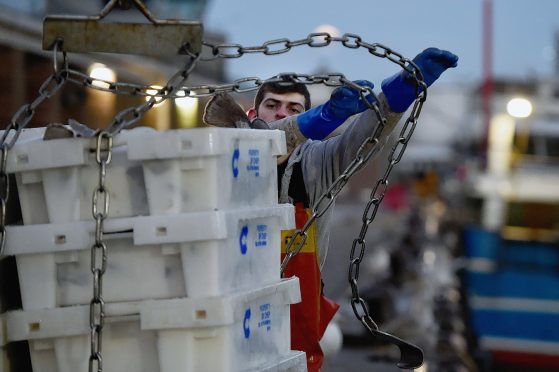Fears have been raised that a coastal protection zone could be used as a “weapon” against north-east trawlermen.
Scottish Natural Heritage is currently holding a consultation on proposals to protect wildlife on the Moray Firth, by creating a protection zone to as far as Redhythe Point, between Portsoy and Sandend.
But yesterday, Banff and Buchan councillors raised concerns that local fishermen could be forced out of the area, if the move meant boat movements were limited.
One even suggested the scheme could be used as a “weapon” against fishing.
SNH hopes that by making the Moray Firth a special protection area, marine birds will be able to breed and live safely without being disturbed.
But councillors have been given little information on how the SNH hopes to achieve its aim, and have now asked for a report to come back detailing what it would mean for the north-east’s fishing fleet.
Fraserburgh councillor Charles Buchan, a former fisherman, said he did not know what he was being asked to approve at yesterday’s meeting.
“I found it very difficult to make up my mind about this,” he said.
“Presumably the crabbers and lobster men with fixed gear will not be affected, but as for our prawn trawlers and fishermen we don’t know what we’re approving.
“I’m very worried by it. I haven’t a clue what the implications would be.”
Mr Buchan, the chairman of the council’s fisheries working group, added that the proposal could even be used ” as a weapon against our fishing fleet”.
Banff and Buchan area committee chairman John Cox called for the SNH to strike a balance between protection measures and the local economy.
He said: “We have to address the implications of this – how it would impact on the economy of the fishing sector.
“We have to ensure we’re not getting to the point where there’s no activity at all there.”
Colleague Michael Watt, also a former fisherman, also said that he was “really concerned”.
“There is no way I can support this,” he said.
“It’s so wide open and doesn’t give any guidelines.
“We have got a substantial fishing fleet fishing out of there quite regularly for langoustines, providing to a high quality market. I’m really concerned.”
In information provided to councillors, the SNH said 144 great northern divers had been spotted between 2001 and 2007.
Over the same period, 324 red-throated divers were also catalogued.
A spokeswoman for the council’s environmental planning service told councillors that the protection would not impact upon planning applications.
“The concern is where there is significant disturbance, where such disturbance would cause birds to move away or make it so they can no longer breed,” she added.
Last night, a spokesman for SNH said the protected area would contribute to the “sustainable management” of our seas, but would not affect creel fishermen.
“At an SPA stakeholder workshop in March we listened to concerns and where possible these have been addressed,” he added.
“For example, boundaries have been revised so that only the areas with the highest densities of birds are now included.
“Like all the other sites, the proposed Moray Firth SPA is an area where multiple activities take place and we would expect that to continue to be the case if the site is classified.
“The potential impacts of new developments and changes to existing activities will need to be assessed.”
Fishermen, he added, would be invited to offer their input as part of the consultation process.
The spokesman continued: “The interactions between these marine birds and the impacts of mobile fishing gear on the availability of their prey is not clear.
“These are well established activities and there is no evidence to support that these fisheries would have a negative impact on the marine birds in the long term. Our advice highlights the need for further research to establish the nature of the interaction between these activities and the birds for which the SPA is being proposed.”
